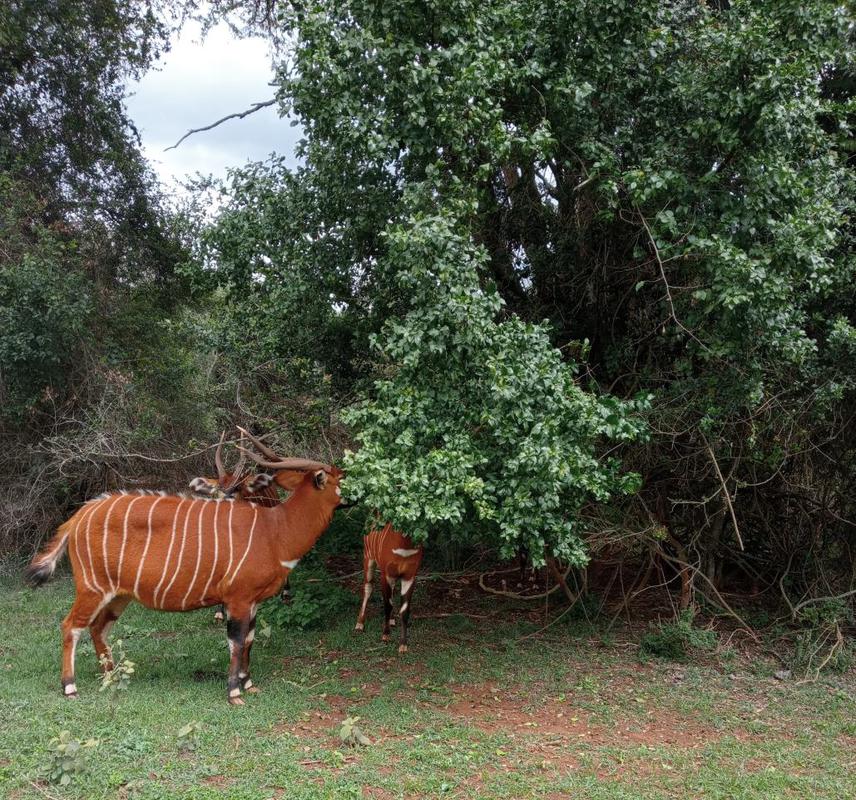June Munanie Mutinda
The ultimate goal of this project is to enhance wild population recovery of the Mountain bongo through nutritional improvements for successful captive breeding and reintroduction to the wild.
This will be achieved through determining:
i. The nutritional foraging goals across age-sex classes and season of the free ranging population of the Mountain bongo in Mount Kenya Wildlife Conservancy
ii. The important food plant species utilized by the Mountain bongo in meeting their nutritional goals
iii. Food resources critical for meeting Mountain bongo nutritional goals in both the Conservancy and targeted area for Mountain bongo reintroduction in Mount Kenya Forest
iv. Use the data on nutritional goals to develop an appropriate feeding program for the captive population to create genetically and demographically stable populations for future reintroduction

The Eastern Mountain Bongo (Tragelaphus eurycerus isaaci) is a critically endangered large forest antelope that is endemic to Kenya and now restricted only in the mountain forest habitat in Kenyan highlands. The existing wild population, less than 100 individuals is greatly isolated and risk extirpation. The bongo population has suffered a major population crash over the last three decades as a result of poaching, human encroachment, habitat destruction and diseases. The same threats continue to threaten the few remaining wild individuals as well as the captive population at Mount Kenya Wildlife Conservancy purported to enhance the wild population recovery.
With extremely low and unviable population in the wild successful captive breeding and re-introduction remains the only hope to save the species from the verge of extinction. Thus, the captive bongo breeding program at Mount Kenya Wildlife Conservancy remains instrumental in enhancing the species population recovery in Kenya. However, success in such a program is dictated by nutritional foraging goals of the captive population, which are critical drivers of individual fitness. Unfortunately, the nutrition ecology of the captive bongo population are poorly understood, which impedes the reintroduction plan as well as the conservation and management efforts towards the species population recovery.
Thus, this project aims at determining nutritional foraging goals of the Bongo and the spatial-temporal variation of key food plant species. Behavioural, vegetation and nutritional sampling methods will be used to collect behavioural and feeding data for this project. The findings will be critical in understanding the nutritional foraging goals of the Mountain Bongo through a Nutritional framework analysis (Raubenheimer et al., (2009). The knowledge will then apply in suggesting the appropriate nutritional constitution of the commercial foods manufactured for the Mountain bongo, design and implement appropriate diet program that ensures bongo nutritional goals are met. This will in turn enhance successful captive breeding to create healthy populations for future reintroduction to the wild.